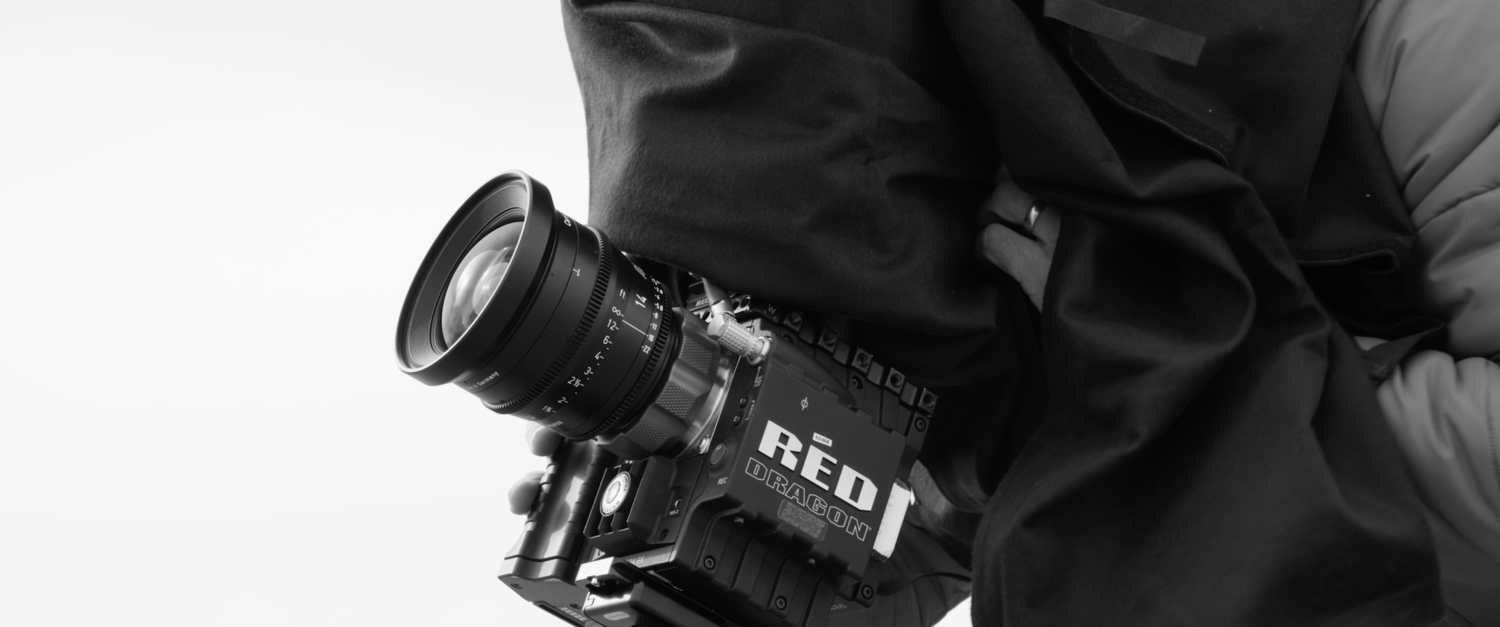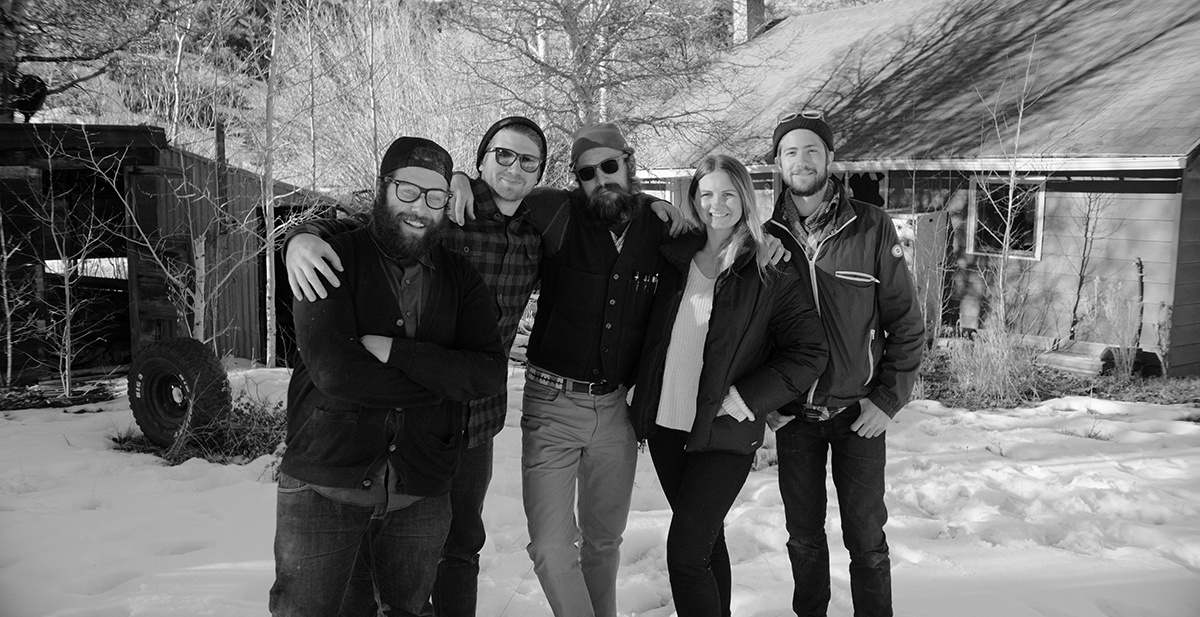What inspires you to pick up your camera? For Ivan Agerton, it’s people – and for all the talk about convergence between the worlds of stills and motion, Ivan is doing it. His ‘stills from motion’ portraits are both a visually gorgeous treat with their sublime use of slow motion, and thought provoking in the connection with the subject Ivan has captured. Not just creating eye candy, Agerton is a fascinating character and provides a great example of the life we can all construct for ourselves – if you decide to take the plunge and go for it.
“Are you doing what you truly want to be doing?”
If you’ve asked yourself this recently, or just need a shot in the arm of inspiration and a chance to reset your career compass, check out the new RED Collective video featuring photographer Ivan Agerton (Note for those listening on speakers at work or with young ears around - some strong language here)
The video highlights just how beautiful his portrait series is. By using a 6K RED Dragon to shoot super smooth, slow motion video, it’s allowed him to pull stills from the footage, and positioned him comfortably at the epicenter of the stills-motion convergence debate.
The Choices We Make, Make All The Difference
I knew all along I was on the wrong track. I put 100% effort behind everything I do but it wasn’t fulfilling.

Self taught with no formal background, and shooting with his first camera from the age of 8, Ivan designed a life for himself after partnering up with his 2 partners at Royal Galactic Media (RGM) in Seattle.
After ten years in business development for a broadcast company, he felt the time was right for change. A chance encounter as he drove by one of his-now-partners at RGM who happened to be shooting on the street, and being inspired by the work of Sam Abell was all it took to push him out of cubicle life.
After he saw what RED was about to launch with the RED One, and reading about RED founder, Jim Jannard, Ivan realized the camera could be a spring board into a world he wanted to create for himself. In late 2007, Ivan did what many of us would not have the balls, or ability to do - he quit his job, sold his house, liquidated his assets and started Royal Galactic. He went ‘all in’. This article is as much about a beautiful portrait series as it is about characters like Ivan, and what inspiration they can provide to each of us in whatever projects we find ourselves involved in.
You’re basically shifting your entire existence, completely uprooting everything and to have a partner to support you through that paradigm shift is critical.
Royal Galactic Media now had 3 RED cameras and were seen as something of a pioneer. This was a risky move but it paid off.
At that time, none of the big rental houses had the cameras we had. We had big name people call us to get the cameras to do tests and use them. I don’t think we would have been able to get the big jobs without having that initial credibility and the connectivity it later brought.
“If You Build It, They Will Come”
We’re very focused on the power of the community here at Fstoppers. Why? Because community can make or break projects.
The community support Ivan has experienced was instrumental in supporting his career move and transition.
This was really interesting about the REDUSER forum – it was a lot of people who just wanted to be involved in what was changing in the industry.
The REDUSER community camaraderie is really important, particularly when you’re making such a big shift as I was at the time. REDUSER is full of people who redefined who they are by this tool.
Ivan explained how the ongoing community support has been critical.
We were posting our work and people were recognizing that and it gave us momentum. That camaraderie and support from that community was huge – if you don’t have it, or have that tight community you have to ingrain yourself in it and find it.
Convergence Part I – Stills And Motion
It’s one thing to look at a still photo. It’s another thing entirely to see the motion. If you’re just a stills or just a motion person, and you’re not embracing the other side, it’s going to impact you from a business AND personal standpoint.
When you can pull the equivalent of a medium format still from a camera designed for video - why wouldn’t you? Interestingly, Ivan realized the importance of the ability to have both stills and motion capability almost by chance.


I was initially shooting for stills – the portraits started out as a quick, direct, stare into the lens. But after I met this one person, I brought the motion file back and was scrubbing through the frames, and this really interesting thing happened. For the first few seconds you can tell there is some apprehension, but something happens, and they became relaxed and felt secure. When this happened, I saw their entire face change and this wall came down – their eyes showed what they truly are and what they were experiencing. This was a really powerful moment, I was like, “This is it!”







Convergence isn’t just a buzzword, it’s something we all have to consider as clients are expecting it just as quickly as hardware manufacturers are trying to accommodate it. As both a photographer and videographer, I am seeing this convergence happen more and more on shoots and Ivan articulated this with his own experience:
We like the fact we have a tool now that allows us to produce both stills and motion. The fact is, this convergence is happening right now. If you show up on a job people now expect you to be able to provide both. To be able to say we can write the stills in the shot list and we’ll get it for you now is very powerful.
One of our bigger clients is Microsoft and a lot of their peripheral marketing pieces are stills pulled from the motion. It helps their bottom line. It also allows us to explore creative boundaries more because there isn’t this stall where you have to wait for your still photographer to get in, light and shoot.
Convergence Part II – Personal And Commercial Work
Everyone recognizes the importance of personal projects and Ivan readily admits his corporate work helps fund the personal projects that then feeds his creativity and style – which feeds back into his corporate work – a self reinforcing virtuous circle of sorts.
The way I approach my portraiture work, it bleeds directly into the corporate work. I don’t know where it comes from, but I’ll see someone interesting, I’ll just approach them and try to connect. I could literally say “There’s something very interesting about you, I’d like to know more about you, maybe make a picture”.
It was similar when I was in business development, having to meet and connect right away, no matter what.

For this particular project on the cowboys and ranchers of Nevada, they often don’t have a voice for their issues - this project is about giving them that voice. You can see the isolation in the way they carry themselves, in their eyes – to get people who have access to the power to change things, or even just to listen to their concerns; that’s the idea behind these cowboy portraits

The corporate work that we do is affording me the ability to be able to go out and shoot these personal projects. I’m bringing this sensibility of these portraits back to the corporate work, it gives these corporations a human voice. We focus on the people who are getting up at 4 and 5am to go to work to do what they love. Those are the stories we are trying to tell at Royal Galactic.




Does The Tool Matter?
I personally feel that the tool doesn’t matter for most of what we do, it’s the person behind the camera that’s more important.
But just how true is that when you’re trying to win larger clients, on bigger jobs, where the quality bar is raised at every level, or where you want to really push personal project work? Or, when we are trying to make use of a camera system that is able to produce super smooth, high frame rate and high resolution motion from which we can pull stills?

Ivan gave me his thoughts on why he is still committed to RED:
These cameras are tools for you to use. Some will prefer a RED, some an Alexa or something else. I don’t bash anyone. For us, we like the RED, specifically the Dragon, because it allows us to be lean and mean, to be very nimble. This is critical on personal projects, especially when you want to connect with your subject.
If I tried to stick an Alexa* into someone’s face like I do with these portraits, where I’m two feet away, and want them to open up to me – it would never work.
[*side note – the Alexa tends to be a much larger camera system physically, so could be more imposing to use in this manner comapred to the relative lower form factor of the EPIC]

There are a number of other factors - the dynamic range of the sensor is ‘filmic’ in how it treats highlights. I personally like the ergonomics – I could be flown to the other side of the world, and on my own for a few weeks and if I had any other camera, I’d need a support team behind me. The low light capability means I can augment with practical light and shape with flags, allowing me to be autonomous and self-reliant.
When you combine all of this new technology with a beat up, 1960s 25mm super speed cinema lens with these imperfections, then everything feels just right - the image has a soul to it.
Final Thoughts
As our conversation drew to a close, it was clear to me that Ivan has followed his instinct to get him to where he is today. I asked him about this as we wrapped.
I never really sat down and said “This is what I’m going to do” and put this ‘5 step plan’ together - I kind of just went out and started shooting. If you try and put this process behind it, there is a possibility of losing that thing that makes what you do yours. You can lose your voice if you concentrate too much, if you try and define too much what it is you’re doing.
Just before we closed out, Ivan reminded me of what we should all be thinking about for our next project, whatever it may be:
Do what’s in your gut and go for it. Create your support if you don’t have it, find a community that you can get in with and allow people to help you. Don’t get stuck in the noise, you’ll lose focus on what you wanted to do in the first place.
On that note, I’m logging off and getting ready to go out and quell the fire that has been burning in my gut all day as I’ve been typing this up – to start shooting and to connect with those people I find interesting.

Special Thanks: [Ivan Agerton of Royal Galactic Media]
Tyler Dinley and Andrea Dondanville [RED Collective]







Interesting interview. One of the reasons I haven't embraced video is because the expense far outweighs that for stills. You'll need more gear, often more time, more people, etc...
It becomes an issue of focusing on making really good stills or really mediocre video.